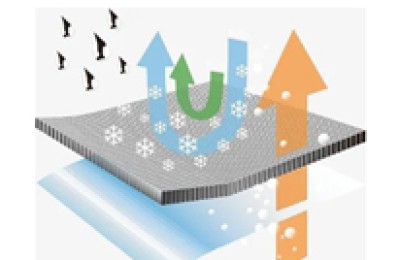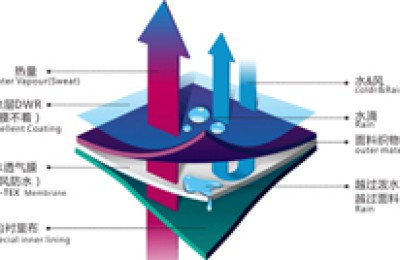On Tuesday, the Federal Reserve’s interest rate meeting began. While waiting for the results of the Federal Reserve’s interest rate meeting in June, market risk sentiment has cooled down. The three major U.S. stock indexes fell more than they rose, reversing their recent strong performance. Recently, the U.S. stock market has been volatile. After the U.S. announced that the economy was in recession at the beginning of the year, economic indicators clearly peaked and rebounded for several days, triggering profit-taking sentiment. The Dow Jones Industrial Average fell more than 300 points, ending a six-day winning streak. The Nasdaq Composite Index was boosted by technology stocks. It hit a record high again, and once exceeded the 10,000-point mark during the session. The Chinese concept stock Fangduoduo shut down dozens of times overnight and closed up about 395%, with an intraday increase of more than 1,000%. The U.S. dollar index plunged during the day, once falling to 96.22, setting a new low in the past three months. Spot gold continued to rise, reaching an intraday high of $1,720 per ounce.
The S&P 500 index closed down 25.20 points, or 0.78%, at 3207.18 points on Tuesday; Nasdaq The Dak Index closed up 29.00 points, or 0.29%, at 9953.75 points on Tuesday; the Dow Jones Index closed down 300.10 points, or 1.09%, at 27272.30 points on Tuesday.
On Tuesday local time in Europe, the German Federal Statistics Office released import and export data for April that were far worse than expected, causing a major blow to market sentiment during the European trading session. As an export-oriented economy, Germany’s exports fell by 24% month-on-month after seasonally adjustment in April, and imports fell by 16.5% month-on-month, the largest decline since the data was collected in 1990. Economists had previously expected export and import data to fall by 15.6% and 16% month-on-month.
Affected by this news, the major stock indexes fell by more than 2% after the European market opened, and then the decline narrowed slightly.
Bankhaus Lampe economist Alexander Krueger pointed out that (Germany) there is not much left in the export wave of the past decade, although the economy may have begun to recover as borders reopen and epidemic prevention measures are relaxed. , but the road out of the shadow of the new crown is bound to be long and difficult, especially in the field of foreign trade.
In the early morning of June 10th, Beijing time, data released by the American Petroleum Institute (API) showed that API crude oil inventories in the United States unexpectedly increased by 8.42 million barrels in the week ending June 5th. It is expected to decrease by 1.45 million barrels; gasoline inventories decreased by 2.913 million barrels; refined oil inventories increased by 4.271 million barrels; after the data was released, U.S. oil fell rapidly in the short term, closing at $38.39 per barrel, with the increase narrowing to 0.52%.
The U.S. Energy Information Administration (EIA) released its monthly short-term energy outlook report on Tuesday (9th local time), predicting that U.S. crude oil production will fall by 670,000 barrels per day in 2020 to 11.56 million barrels per day. barrels per day, a steeper decline than the previous forecast of 540,000 barrels per day, as drillers cut activity. The EIA expects U.S. crude oil production to continue declining, falling to 10.6 million barrels per day in March 2021, before increasing slightly by the end of 2021. In 2021, U.S. oil demand is expected to increase by 1.4 million barrels per day to 19.46 million barrels per day, compared with the EIA’s previous forecast of an increase of 1.45 million barrels per day.
The market is also worried about demand and supply. Morgan Stanley said that oil prices have risen too fast before, and global oil demand may not return to pre-epidemic levels before the end of 2021. s level. Supply issues may return, with U.S. shale production restarting as prices rise. In addition, when OPEC and its allies begin to reduce production cuts, oil production will increase sharply.
In terms of the epidemic, statistics released by Johns Hopkins University in the United States show that as of 22:33 on June 9, Beijing time, the number of confirmed cases of new coronary pneumonia worldwide rose to There were 7,155,952 cases, including 407,302 deaths. The United States, where the epidemic is most severe, has reported a total of 1,963,828 confirmed cases of COVID-19, and 111,139 patients have died.
The market is waiting for the latest statement from the Federal Reserve
The Federal Reserve policy statement will be released in the early hours of Thursday morning Beijing time. The market generally expects the Federal Reserve to keep interest rates unchanged at the current level due to the unexpected increase in U.S. non-farm payroll employment in May, which completely surprised the market. At the same time, the interest rate futures market shows that investors have given up on expectations that the Federal Reserve will implement a negative interest rate policy next year.
According to CME’s “Fed Watch”, the probability that the Federal Reserve will maintain interest rates in the 0%-0.25% range in June is 84.3%, and raise interest rates by 25 basis points to the 0.25%-0.50% range. The probability of maintaining interest rates in the range of 0%-0.25% in July is 84.6%, and the probability of raising interest rates by 25 basis points is 15.4%.
For this meeting, the market is paying more attention to the Federal Reserve’s assessment of the economic status and prospects, as well as its prediction of risks, as states in the United States gradually reopen. The outcome of these discussions may determine whether the Fed will increase its bond purchases.
It is worth noting that on Monday the Federal Reserve announced the expansion of the “Main Street Lending Program” (Main Street Lending Program), while relaxing the terms to allow more businesses to participate, reducing the minimum loan The amount was reduced to US$250,000, the cap was raised to US$300 million, and the loan repayment period was extended to five years. The Federal Reserve will launch its $600 billion Main Street Lending Facility in the coming days.
It is understood that this crisis relief plan is mainly aimed at those companies that are too large (500 or more employees) and cannot benefit from the Paycheck Protection Program (Paycheck Protection Program). Companies that are too small to benefit directly from the Fed’s corporate bond-buying program are part of the federal government’s unprecedented stimulus plan to boost…Increase cost center. On the demand side, car sales are overall rising, and end market demand has come out of its darkest moment. However, he said that the current fundamentals are still at a stage where long and short factors are intertwined. The overall rubber supply and demand are at a stage of marginal improvement. The demand side dominates the price trend, but the recovery of demand during the year is difficult to achieve overnight.
Specifically, Hongyuan Futures analyst Zhu Ziyue said that in terms of supply, it is currently in the early stages of gum tree harvesting, coupled with the impact of domestic powdery mildew, the overall supply is limited. Raw material prices continue to rise, and the price difference between glue and cup glue continues to expand, resulting in a continued decline in the profits of foreign factories and the delivery profits of domestic factories. It is expected that the tight supply situation may gradually improve in mid-to-late June.
From the demand side, domestic heavy truck sales increased sharply again in May year-on-year, showing that downstream infrastructure and real estate construction are indeed performing well, and domestic demand continues to improve; in terms of external demand, it is reported that Export inquiries increased slightly, but it will take time for substantial demand to improve, and the overall external demand pattern is weak.
In terms of inventory, current market sales mainly digest old rubber inventory, and new rubber is mainly pre-sold. The inventory in Qingdao Free Trade Zone has declined for six consecutive weeks, and the inventory outside the area has increased for three consecutive weeks. The weekly slowdown is more in line with the previous improvement in export margins and the expectation of destocking caused by the unrecovered supply. She expects this trend to continue; the inventory in the previous period is still low. Against the background of low supply and delivery losses, Exchange inventories may remain low.
In general, Zhu Ziyue believes that rubber will continue to have marginal improvements in fundamentals in the short term, and the macro environment is relatively optimistic. It may still continue to have a strong shock pattern, and pay attention to the upper price at 10,800-11,000 points. pressure; in the medium term, the release of supply may lead to price adjustments; in the long term, she said she remains cautiously optimistic about the improvement in exports. The inventory turning point may appear in June. It is recommended to try to buy low positions on dips, but the upside space may be limited.
Peng Jieli believes that it is difficult to see a trend upward trend in Hujiao, and it is mostly a periodic valuation recovery market. He said that the fundamental pattern of “high inventory and weak demand” is difficult to see a significant change at present. On the one hand, we need to pay attention to when the inventory turning point will arrive and how intensive the destocking will be; on the other hand, we need to pay attention to whether the restart of overseas economies can drive the rapid recovery of external demand, and whether the strong momentum of domestic automobile consumption can be continued. </p







